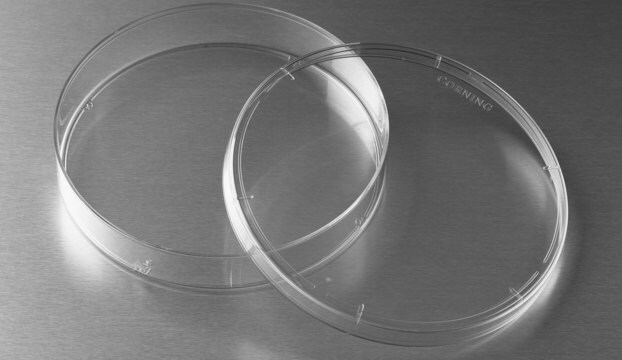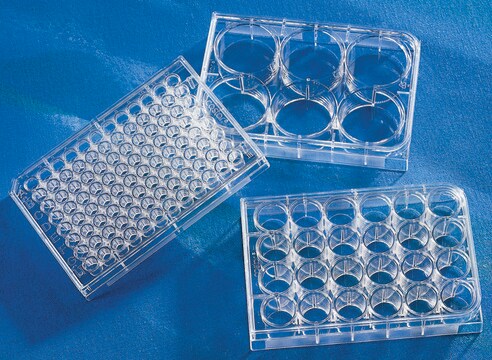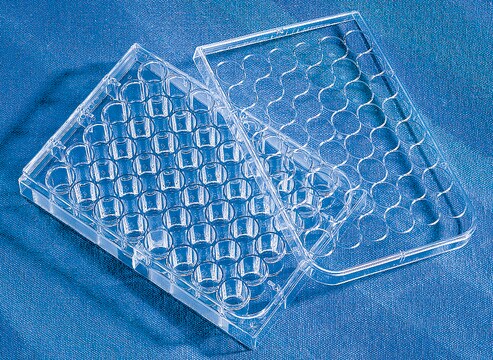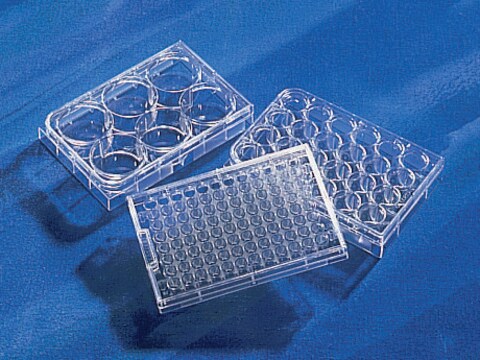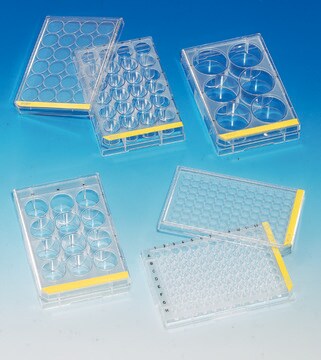CLS3516
Corning® Costar® TC-Treated Multiple Well Plates
size 6 wells, clear, polystyrene plate, flat bottom, case of 50 (individually wrapped), sterile, lid
Synonym(s):
cell culture plate, multi well plates, multiple well plates, multiwell plates, tissue culture plates
About This Item
clear bottom
flat bottom
polystyrene plate
round clear wells
skirt
Recommended Products
material
clear
clear bottom
flat bottom
polystyrene plate
round clear wells
description
growth area 9.5 cm2
sterility
sterile
feature
lid
skirt
packaging
case of 50 (individually wrapped)
manufacturer/tradename
Corning 3516
size
6 wells
well diam.
34.8 mm
well volume
16.8 mL
well working volume
1.9-2.9 mL
binding type
Tissue Culture (TC)-treated surface
Looking for similar products? Visit Product Comparison Guide
General description
Application
- cultivate SaOS-2cells
- construct stable cell lines
- seed and differentiate cells for real-time reverse transcription polymerase chain reaction (RT-PCR)
Features and Benefits
- Flat bottoms for enhanced stability.
- Specially treated to promote optimalcell attachment.
- Ensured sterility through gammairradiation.
- Free from pyrogens, ensuring a safe environmentfor cell culture.
Legal Information
recommended
Choose from one of the most recent versions:
Certificates of Analysis (COA)
Don't see the Right Version?
If you require a particular version, you can look up a specific certificate by the Lot or Batch number.
Already Own This Product?
Find documentation for the products that you have recently purchased in the Document Library.
Customers Also Viewed
Our team of scientists has experience in all areas of research including Life Science, Material Science, Chemical Synthesis, Chromatography, Analytical and many others.
Contact Technical Service